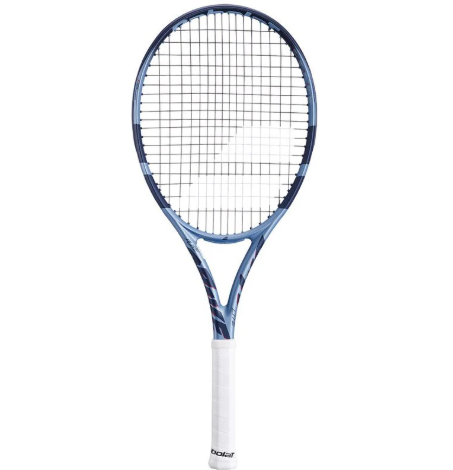
Ace Your Game: The Ultimate Guide to Choosing the Perfect Tennis Racquet
Introduction to Tennis Racquets
Tennis is more than just a sport; it’s a thrilling dance of strategy, agility, and precision. At the heart of this beautiful game lies one crucial element: the tennis racquet. Choosing the right racquet can elevate your performance from average to exceptional, transforming each stroke into an effortless swing or a powerful serve.
But with so many options available—different shapes, sizes, materials—how do you know which one is perfect for you? Whether you’re a seasoned player looking to upgrade or a novice stepping onto the court for the first time, understanding what makes great tennis racquets will set you on the path to success. Let’s explore how to find that ideal match for your game!
Finding the Right Grip Size
Finding the right grip size is crucial for comfort and control on the court. A properly sized racquet enhances your performance and reduces the risk of injury.
To determine your ideal grip size, measure from the tip of your ring finger to the bottom crease of your palm. This measurement will guide you toward a suitable option.
When holding a racquet, you should have just enough space to fit one finger between your fingers and palm. If it feels too tight or loose, it’s time to experiment with different sizes.
Keep in mind that grip sizes vary by brand. What works for one may not suit another. Trying out various grips before making a purchase can make all the difference in feel and playability.
Remember that personal preference plays a significant role too; some players prefer thicker grips while others go for thinner ones based on their playing style.
Choosing the Right Head Size and Weight
Head size plays a crucial role in how you connect with the ball. Generally, larger head sizes offer more power and a bigger sweet spot. This can be particularly beneficial for beginners who are still honing their accuracy.
On the other hand, smaller heads provide greater control and precision. Advanced players often prefer these for their ability to place shots accurately.
Weight is another key factor. Heavier racquets tend to offer stability during impact, making them ideal for powerful strokes. Lighter options enhance maneuverability, allowing quick adjustments at the net or while serving.
Finding your balance between head size and weight is essential to elevate your game. Consider how each element feels in your hand as you swing through practice sessions. Your comfort will ultimately dictate your performance on the court.
Understanding Different Racquet Materials
Tennis racquets are crafted from various materials, each affecting performance and feel. The most common materials include graphite, aluminum, and composite blends.
Graphite is a popular choice among serious players. It offers excellent stiffness-to-weight ratios, providing power without sacrificing control. Many high-end racquets utilize this material for its responsiveness.
Aluminum racquets tend to be heavier but are often more affordable. They’re perfect for beginners looking for durability without breaking the bank. While they may lack some advanced features, they provide a solid foundation for learning the game.
Composite racquets combine different materials to optimize performance attributes. These can balance power with control or enhance maneuverability based on specific designs.
Choosing the right material depends on your preferences and playing style. Each option brings unique characteristics that can elevate your game if matched correctly to your needs.
The Importance of String Tension
String tension is a critical factor that can significantly influence your performance on the court. The tension at which strings are strung affects how the racquet responds during play. Higher tension typically means more control and spin but less power, while lower tension offers greater power with a softer feel.
Choosing the right string tension depends largely on your playing style and skill level. Beginners often benefit from looser strings for added forgiveness, while advanced players may prefer tighter strings for precision shots.
Additionally, string material plays a role in how much you can adjust the tension without compromising durability or comfort. Regularly checking and adjusting your string tension ensures optimal performance as it changes over time with use.
Experimenting with different tensions allows players to find their sweet spot—where control meets comfort—and enhances overall gameplay experience.
Trying Before Buying: Demo Programs and Pro Shop Assistance
When it comes to selecting a tennis racquet, firsthand experience can be invaluable. Many local pro shops and sporting goods stores offer demo programs. These allow you to test various models on the court before making your purchase.
Taking advantage of these demos helps you feel the weight, balance, and grip of different racquets. You can assess how each one complements your playing style in real time.
Staff at pro shops are often well-trained and knowledgeable about equipment nuances. They can provide personalized insights based on your skill level and preferences, guiding you toward a suitable choice.
Don’t hesitate to ask questions during this process; their expertise is an asset that enhances your decision-making journey. This step not only boosts confidence but also ensures satisfaction with what will become an essential part of your game for years to come.
Maintenance and Care Tips for Your Racquet
Taking care of your tennis racquet is essential for longevity and performance. Start by wiping down the strings and frame after each match to remove dirt and moisture. A simple cloth can do wonders.
Store your racquet in a protective cover when not in use. This shields it from dust and potential damage. Avoid leaving it in extreme temperatures, as heat or cold can warp the frame.
Regularly check the string tension. Strings lose elasticity over time, affecting playability. Restringing every few months keeps your game sharp.
Inspect grips for wear. If they feel slick or uncomfortable, consider replacing them to maintain control during play.
Be mindful of how you transport your racquet. A padded bag offers extra protection on the go, preventing dings or scratches that could impact its performance during crucial matches.
Choosing a Racquet Based on Playing Style and Level
Your playing style significantly influences the type of racquet you should choose. Are you an aggressive baseliner or a net player? Each style demands different features from your racquet.
Aggressive players benefit from rackets with a larger head size and lightweight design. This allows for powerful swings and more spin. If you like to dominate at the net, opt for a control-oriented racquet that offers precision over power.
Beginners often require forgiving frames that enhance playability. A medium-weight racquet with an oversize head can help develop skills without overwhelming them.
Intermediate and advanced players might seek specific attributes—like stiffness or balance—that complement their technique. It’s about finding that sweet spot between comfort and performance tailored to how you play best.
Understanding these nuances will make all the difference in elevating your game on the court.
Additional Factors to Consider: Budget, Brand, and Personal Preferences
Budget plays a crucial role when selecting a tennis racquet. It’s essential to identify what you are willing to spend. Prices can vary widely, from beginner models to high-end professional equipment.
Brand loyalty often influences choices in the tennis community. Some players prefer established brands known for quality and innovation, while others may opt for emerging labels that offer unique features at competitive prices.
Personal preferences also matter significantly. Consider factors like color, design, and brand reputation as they can enhance your connection with the racquet.
Additionally, think about where you play most frequently—this might affect your choice of materials or technologies within the racquet itself. Tailoring your decision based on these elements will lead to a more satisfying and confident playing experience on the court.
Conclusion
When it comes to choosing the perfect tennis racquet, it’s essential to consider various factors that suit your unique playing style and preferences. Finding the right grip size ensures comfort and control during matches. The head size and weight of the racquet can significantly impact your performance on the court, so choose wisely based on your skill level.
Understanding materials used in racquets helps you make informed decisions about durability and feel. String tension plays a crucial role in how much power or control you’ll have over your shots—getting this right is vital for elevating your game.
The journey of selecting a tennis racquet may seem daunting at first glance but arming yourself with knowledge makes it an exciting venture toward enhancing both enjoyment and performance on the court.

